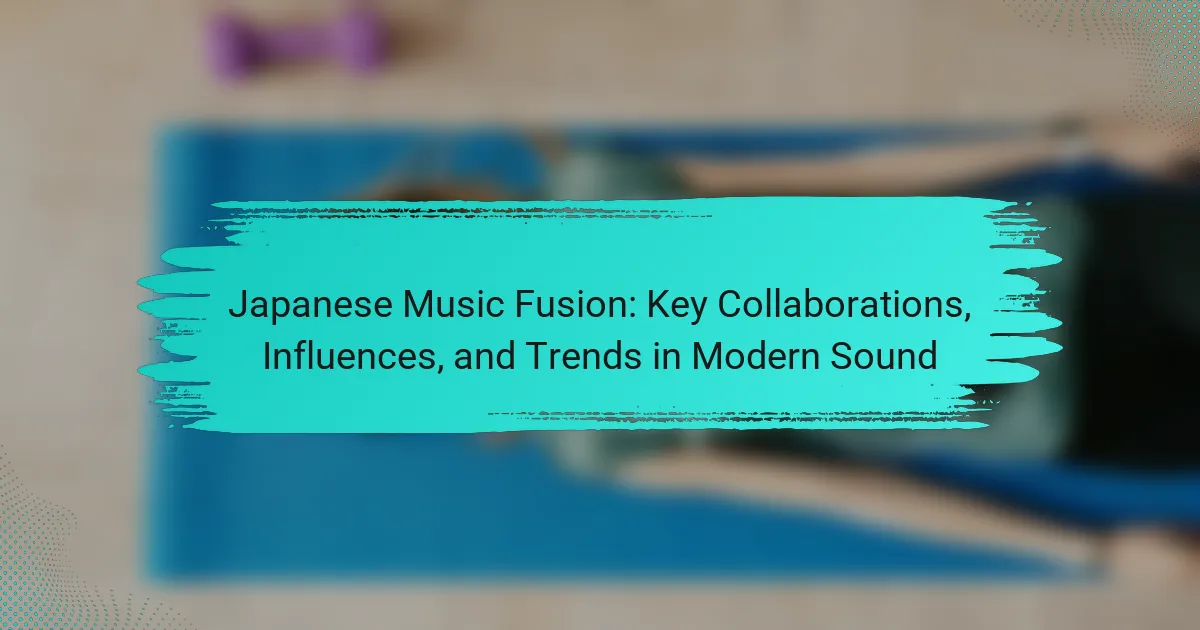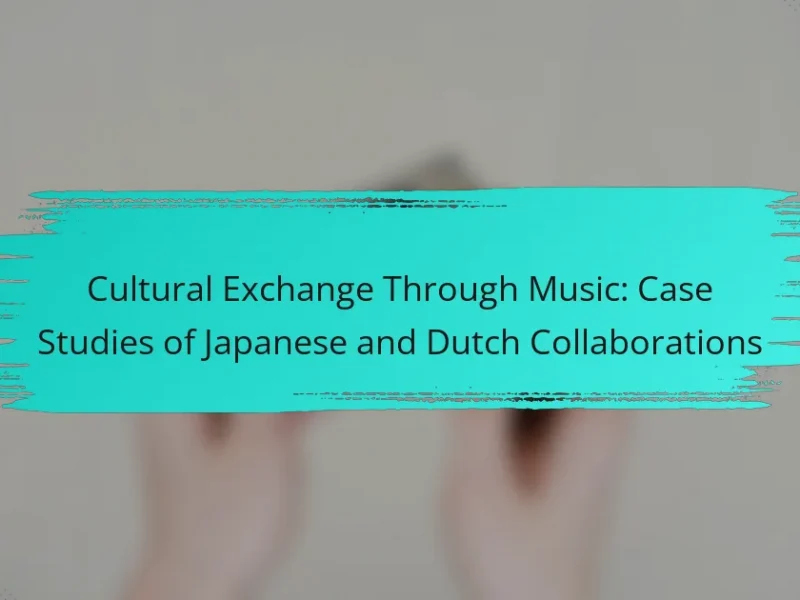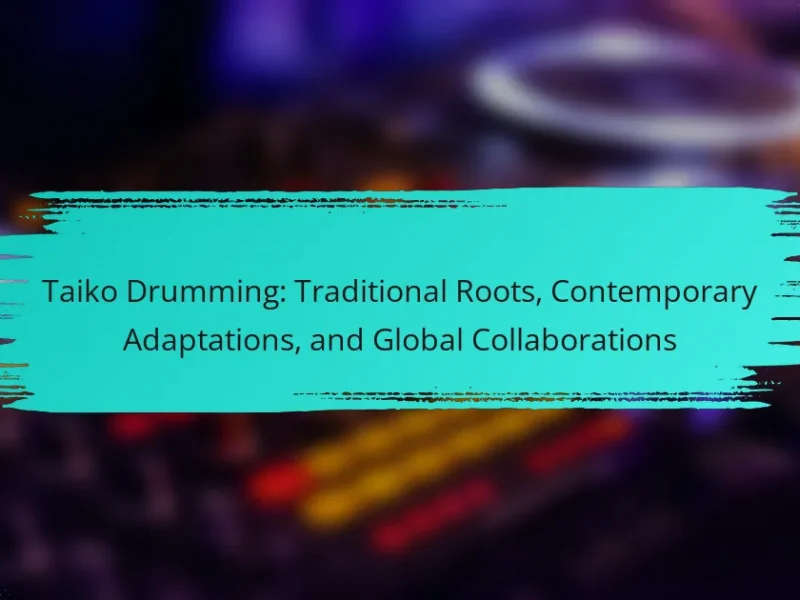Japanese music fusion combines traditional sounds with contemporary genres, creating a vibrant and evolving music scene. This article explores key collaborations between artists, the influence of technology on sound production, and emerging trends blending genres like J-pop with hip-hop and electronic music. It also addresses challenges faced by artists in this dynamic landscape and highlights the promising future of this innovative genre.
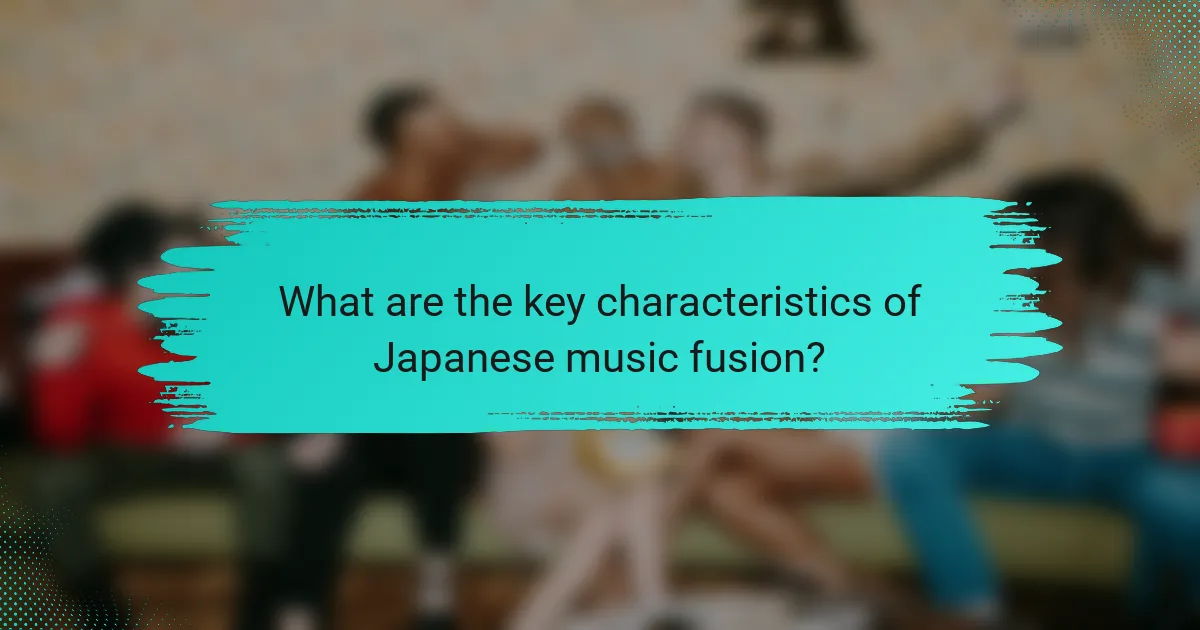
What are the key characteristics of Japanese music fusion?
Japanese music fusion blends traditional elements with contemporary genres, creating a unique sound. Key characteristics include the incorporation of instruments like the shamisen alongside modern technology, diverse influences from global music styles, and collaborations between artists from different backgrounds. This fusion reflects cultural exchange and innovation, resulting in a vibrant music scene that continues to evolve. Notable trends involve blending genres such as J-pop with hip-hop and electronic music, showcasing the adaptability of Japanese music.
How have traditional Japanese instruments influenced modern fusion sounds?
Traditional Japanese instruments have significantly influenced modern fusion sounds by integrating unique tonal qualities and rhythmic patterns. Instruments like the shamisen and koto introduce distinct melodies that enrich contemporary genres. Collaborations between traditional musicians and modern artists create innovative soundscapes, blending cultural heritage with current trends. This fusion fosters a dynamic musical dialogue, enhancing both the appreciation of traditional music and the evolution of modern styles.
Which genres are most commonly blended with Japanese music?
Japanese music commonly blends with genres like pop, rock, electronic, jazz, and traditional folk. These fusions create unique sounds that reflect cultural diversity and modern trends. For instance, J-Pop often incorporates elements of hip-hop and R&B, while traditional instruments are integrated into contemporary electronic music. This blend enhances the global appeal of Japanese music, attracting a wider audience.
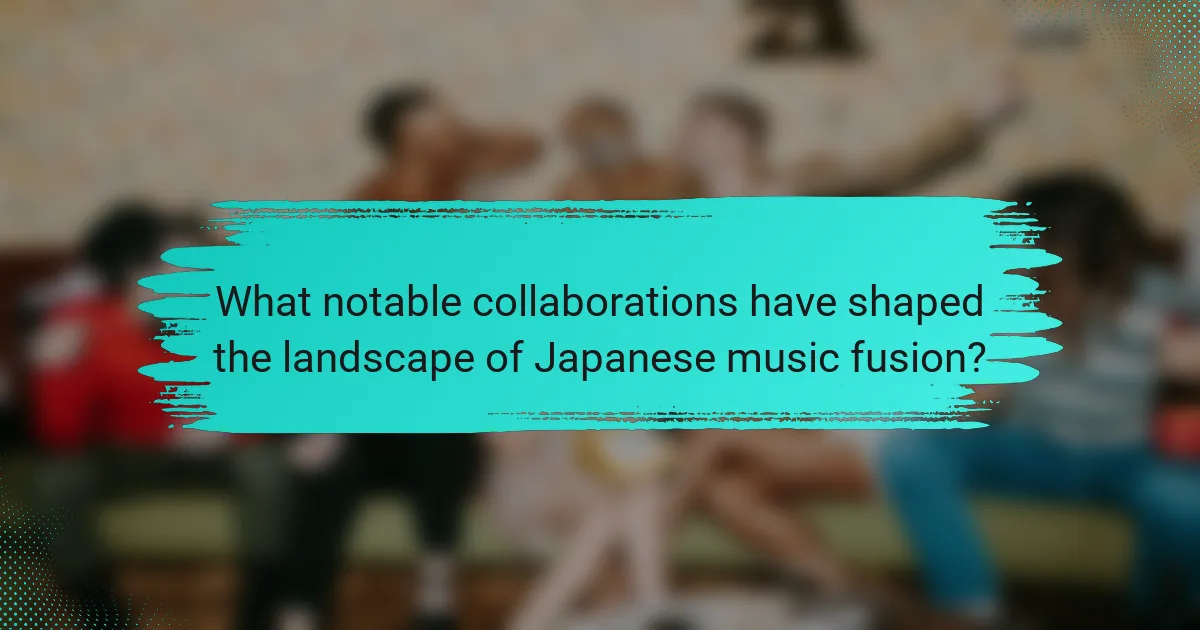
What notable collaborations have shaped the landscape of Japanese music fusion?
Notable collaborations in Japanese music fusion include artists like Ryuichi Sakamoto and David Sylvian, who blended electronic and traditional elements. Another influential pairing is the collaboration between the rock band B’z and various international artists, expanding their sound globally. The fusion of hip-hop and traditional Japanese music by artists like Nujabes has created a unique genre that resonates widely. These collaborations highlight the diverse influences shaping modern Japanese music.
Who are the leading artists in contemporary Japanese music fusion?
Leading artists in contemporary Japanese music fusion include Cornelius, who blends pop with electronic elements, and Ryuichi Sakamoto, known for his innovative soundscapes. Other notable figures are Yoshinori Sunahara, who integrates various genres, and Kitaro, recognized for his new age music that fuses traditional Japanese sounds. These artists exemplify the dynamic trends and collaborations shaping modern Japanese music.
What role do international artists play in Japanese music collaborations?
International artists significantly enhance Japanese music collaborations by introducing diverse influences and styles. These partnerships foster innovation, blending traditional Japanese sounds with global genres. Collaborations often result in unique musical fusions that attract wider audiences, showcasing the adaptability of Japanese music. Notable examples include artists like Pharrell Williams and Ariana Grande, who have worked with Japanese musicians, amplifying cultural exchange and creativity.
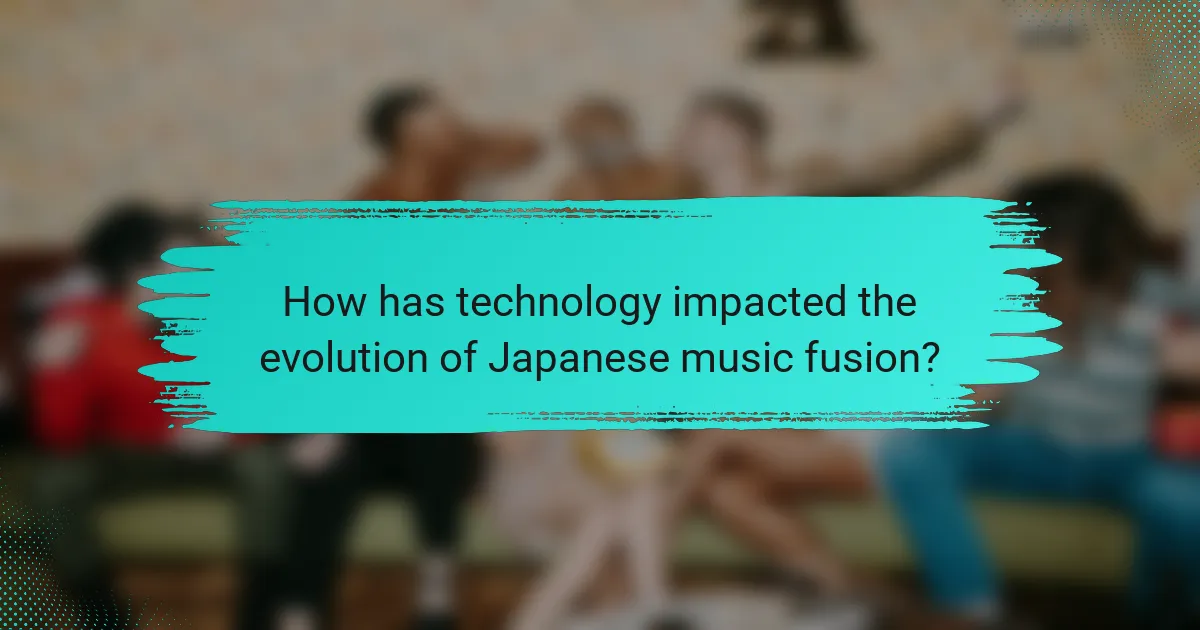
How has technology impacted the evolution of Japanese music fusion?
Technology has significantly influenced the evolution of Japanese music fusion by enabling diverse collaborations and innovative sound production. Digital platforms have facilitated cross-genre partnerships, allowing traditional Japanese music to blend with global styles such as jazz, hip-hop, and electronic. This fusion has led to unique sounds, exemplified by artists like Ryuichi Sakamoto, who incorporates modern technology into his compositions. Additionally, advancements in music software have empowered creators to experiment with traditional instruments, enriching the fusion landscape. As a result, Japanese music continues to evolve, reflecting both cultural heritage and contemporary influences.
Which digital platforms are most influential in promoting Japanese music fusion?
Digital platforms like YouTube, Spotify, and TikTok are most influential in promoting Japanese music fusion. YouTube serves as a primary venue for music videos and live performances, allowing artists to reach global audiences. Spotify provides curated playlists that highlight Japanese music fusion, increasing its visibility. TikTok facilitates viral trends, enabling snippets of fusion tracks to gain popularity quickly. These platforms collectively enhance collaboration opportunities and broaden audience engagement, driving the growth of Japanese music fusion in modern sound.
How does social media shape audience engagement with fusion music?
Social media significantly enhances audience engagement with fusion music by facilitating interaction and discovery. Platforms like Instagram and TikTok allow artists to showcase their unique styles, reaching global audiences instantly. Collaborative projects often gain traction through viral challenges, driving interest in various fusion genres. Additionally, user-generated content fosters community, encouraging fans to share their interpretations and experiences. This dynamic interaction creates a vibrant ecosystem where fusion music thrives, influenced by trends and cultural exchanges.
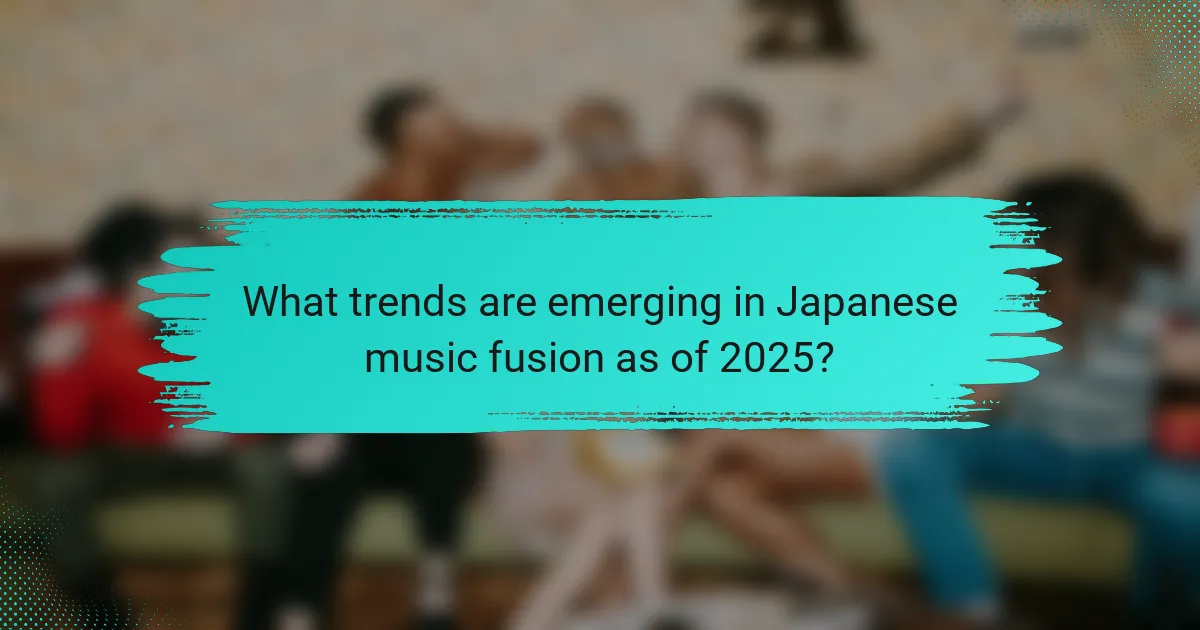
What trends are emerging in Japanese music fusion as of 2025?
Emerging trends in Japanese music fusion by 2025 include increased collaborations between traditional and contemporary artists, blending genres like J-Pop with hip-hop and electronic music. This fusion emphasizes cultural storytelling and innovative soundscapes. Notable collaborations are expected to feature both local and international artists, enhancing global reach. Additionally, the use of technology in music production will play a pivotal role, allowing for unique sounds and accessibility.
How are cultural events influencing the direction of fusion music?
Cultural events are significantly shaping the evolution of fusion music by promoting collaboration among diverse genres. These events provide platforms for artists to experiment, leading to innovative soundscapes that blend traditional Japanese music with global influences.
For instance, festivals like Fuji Rock and Summer Sonic showcase various artists, encouraging cross-genre partnerships. This interaction fosters a unique attribute of fusion music: the seamless integration of elements from jazz, rock, and traditional Japanese instruments like the shamisen.
Moreover, cultural exchanges at these events often inspire musicians to explore themes that resonate with broader audiences, enhancing the appeal of fusion music. As a result, modern sound trends reflect a rich tapestry of cultural narratives, pushing the boundaries of musical expression.
Which new sounds or styles are gaining popularity in Japan and beyond?
Japanese music fusion is experiencing a surge in popularity, blending traditional sounds with global influences. Notable trends include collaborations between J-Pop artists and international musicians, resulting in innovative genres like city pop revival and trap-infused tracks. Emerging artists are redefining contemporary music by incorporating elements from hip-hop, R&B, and electronic music. This fusion not only appeals to domestic audiences but also resonates with global listeners, expanding Japan’s musical influence worldwide.
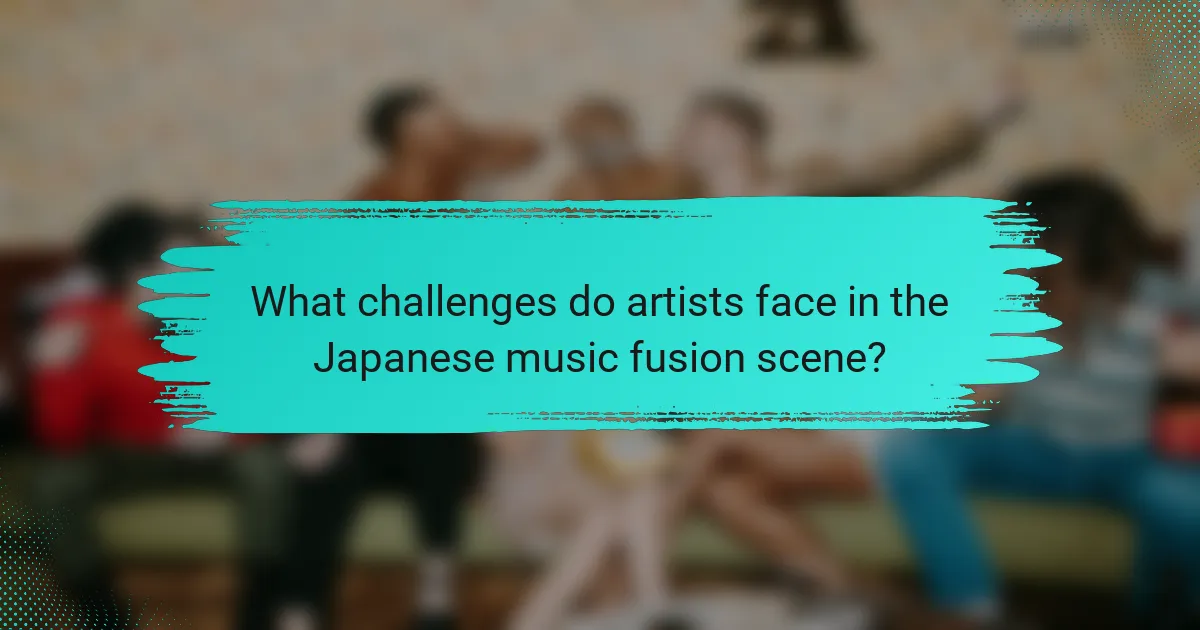
What challenges do artists face in the Japanese music fusion scene?
Artists in the Japanese music fusion scene face significant challenges, including cultural barriers, genre blending difficulties, and market saturation. These obstacles can hinder collaboration and innovation. Cultural expectations may limit artistic expression, while blending diverse genres often leads to identity conflicts. Additionally, the competitive landscape makes it hard for new artists to gain recognition.
How do cultural preservation and innovation coexist in fusion music?
Cultural preservation and innovation coexist in fusion music by blending traditional elements with contemporary styles. This integration allows artists to honor their heritage while exploring new creative avenues. For instance, Japanese music fusion often incorporates traditional instruments like the shamisen with modern genres such as jazz and electronic music. This approach not only revitalizes cultural practices but also attracts diverse audiences, fostering cross-cultural dialogue. Collaborations between traditional musicians and contemporary artists further exemplify this balance, creating unique soundscapes that respect the past while embracing the future.
What are common misconceptions about Japanese music fusion?
Common misconceptions about Japanese music fusion include the belief that it lacks authenticity, is purely commercial, or that it only blends traditional and modern genres. Many assume fusion music is superficial, ignoring its deep cultural roots and innovative spirit. Critics often overlook the collaborative nature that enriches the genre, involving diverse influences from various musical traditions. Additionally, some people think it is a recent trend, while its origins can be traced back decades, showcasing a rich history of experimentation and evolution.
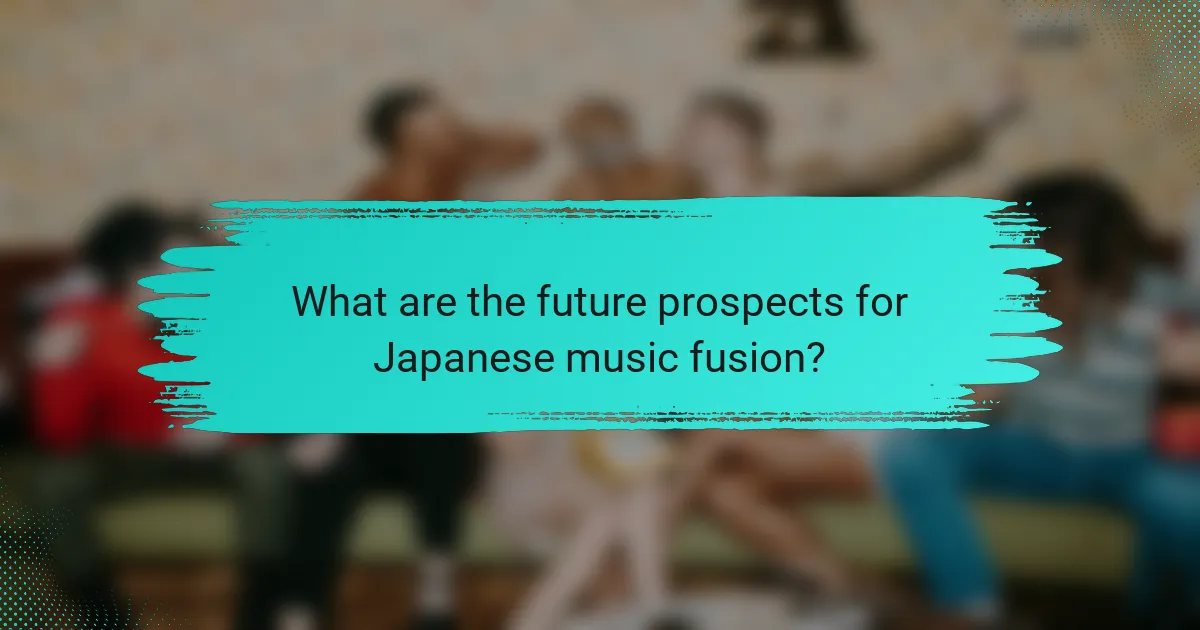
What are the future prospects for Japanese music fusion?
Japanese music fusion has promising future prospects driven by diverse collaborations and global influences. Artists are increasingly blending traditional Japanese sounds with genres like hip-hop, electronic, and jazz. This trend fosters innovation and attracts international audiences, enhancing cultural exchange. Additionally, advancements in technology enable wider distribution and collaboration opportunities, further expanding the reach of Japanese music fusion. The unique integration of local instruments and contemporary styles creates a distinctive sound that resonates with listeners worldwide.
Which emerging artists should be watched in the coming years?
Several emerging artists in Japanese music fusion are gaining attention and should be watched closely. Artists like Aimer, known for blending pop and traditional sounds, and Kenshi Yonezu, who mixes various genres, are leading the way. Additionally, the duo YOASOBI, recognized for their storytelling through music, continues to rise in popularity. These artists reflect key trends in modern sound by incorporating diverse influences, showcasing the evolution of Japanese music. Their unique styles and innovative collaborations promise to shape the future of the genre.
What strategies can artists use to succeed in the global music market?
Artists can succeed in the global music market by embracing collaboration, leveraging digital platforms, and understanding cultural influences. Collaborations with international artists can enhance reach and diversify sound. Utilizing streaming services and social media increases visibility and engagement with global audiences. Understanding trends in music fusion, particularly in genres like Japanese music, allows artists to create unique offerings that resonate across cultures. Engaging in cross-genre experimentation can also attract diverse listener demographics, ultimately leading to greater success.
What best practices can be adopted for creating impactful fusion music?
To create impactful fusion music, embrace collaboration, cultural exchange, and innovative experimentation. Prioritize blending diverse genres to enhance sound richness.
Engage with traditional Japanese instruments like the shamisen or koto, integrating them into modern contexts. Collaborate with artists from various backgrounds to infuse fresh perspectives and techniques.
Stay informed about current trends in both Japanese and global music scenes, adapting to evolving listener preferences. Experiment with technology, such as digital production tools, to create unique soundscapes that resonate with audiences.
Lastly, focus on storytelling through music, ensuring that each fusion piece conveys a meaningful narrative that connects emotionally with listeners.
